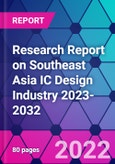Southeast Asia in this report includes 10 countries: Singapore, Thailand, Philippines, Malaysia, Indonesia, Vietnam, Myanmar, Brunei, Laos and Cambodia. With a total population of over 600 million by the end of 2021, Southeast Asia has an overall economic growth rate higher than the global average and is one of the key drivers of future global economic growth.
According to the publisher's analysis, the economic levels of the 10 Southeast Asian countries vary greatly, with Singapore being the only developed country with a per capita GDP of about US$73,000 in 2021. While Myanmar and Cambodia will have a GDP per capita of less than US$2,000 in 2021. The population and minimum wage levels also vary greatly from country to country, with Brunei, which has the smallest population, having a total population of less than 500,000 people in 2021, and Indonesia, which has the largest population, having a population of about 275 million people in 2021. The most economically advanced countries in Southeast Asia do not have a legal minimum wage, with the actual minimum wage exceeding US$400 per month (for foreign maids), while the lowest minimum wage level in Myanmar is only about US$93 per month.
The development of the IC design industry in Southeast Asian countries differs greatly. According to the publisher's analysis, Singapore is a major semiconductor manufacturing town with a mature semiconductor industry chain of IC design, manufacturing, packaging and testing, etc. Chip design giants such as Broadcom, Ceres and MediaTek have set up R & D centers and operation facilities in Singapore, etc. Malaysia's IC design industry has also gained a certain scale. Malaysia is an important global semiconductor packaging and testing center. After years of development, Malaysia has a number of chip design companies, gradually moving closer to the front-end IC design segment from the semiconductor back-end process base. The IC design industry in Thailand, Vietnam and other countries has also started to develop gradually.
Overall, according to the publisher's forecast, the size of Southeast Asia's IC design industry will maintain growth from 2023-2032. On the one hand, Southeast Asian countries are rich in labor resources and low production costs, and global chip manufacturers have been transferring production capacity to Southeast Asia, which has to a certain extent cultivated local technical talents and improved local R & ;D level. On the other hand, the global chip supply is tight and demand continues to rise, Southeast Asian countries try to seize the opportunity to promote the upgrading of the local chip industry.
Topics covered:
- Southeast Asia IC Design Industry Status and Major Sources in 2018-2022
- What is the Impact of COVID-19 on Southeast Asia IC Design Industry?
- Which Companies are the Major Players in Southeast Asia IC Design Industry Market and What are their Competitive Benchmarks?
- Key Drivers and Market Opportunities in Southeast Asia IC Design Industry
- What are the Key Drivers, Challenges, and Opportunities for Southeast Asia IC Design Industry during 2023-2032?
- What is the Expected Revenue of Southeast Asia IC Design Industry during 2023-2032?
- What are the Strategies Adopted by the Key Players in the Market to Increase Their Market Share in the Industry?
- What are the Competitive Advantages of the Major Players in Southeast Asia IC Design Industry Market?
- Which Segment of Southeast Asia IC Design Industry is Expected to Dominate the Market in 2032?
- What are the Major Adverse Factors Facing Southeast Asia IC Design Industry?
Table of Contents
Methodology
Background research defines the range of products and industries, which proposes the key points of the research. Proper classification will help clients understand the industry and products in the report.
Secondhand material research is a necessary way to push the project into fast progress. The analyst always chooses the data source carefully. Most secondhand data they quote is sourced from an authority in a specific industry or public data source from governments, industrial associations, etc. For some new or niche fields, they also "double-check" data sources and logics before they show them to clients.
Primary research is the key to solve questions, which largely influence the research outputs. The analyst may use methods like mathematics, logical reasoning, scenario thinking, to confirm key data and make the data credible.
The data model is an important analysis method. Calculating through data models with different factors weights can guarantee the outputs objective.
The analyst optimizes the following methods and steps in executing research projects and also forms many special information gathering and processing methods.
1. Analyze the life cycle of the industry to understand the development phase and space.
2. Grasp the key indexes evaluating the market to position clients in the market and formulate development plans
3. Economic, political, social and cultural factors
4. Competitors like a mirror that reflects the overall market and also market differences.
5. Inside and outside the industry, upstream and downstream of the industry chain, show inner competitions
6. Proper estimation of the future is good guidance for strategic planning.

LOADING...






